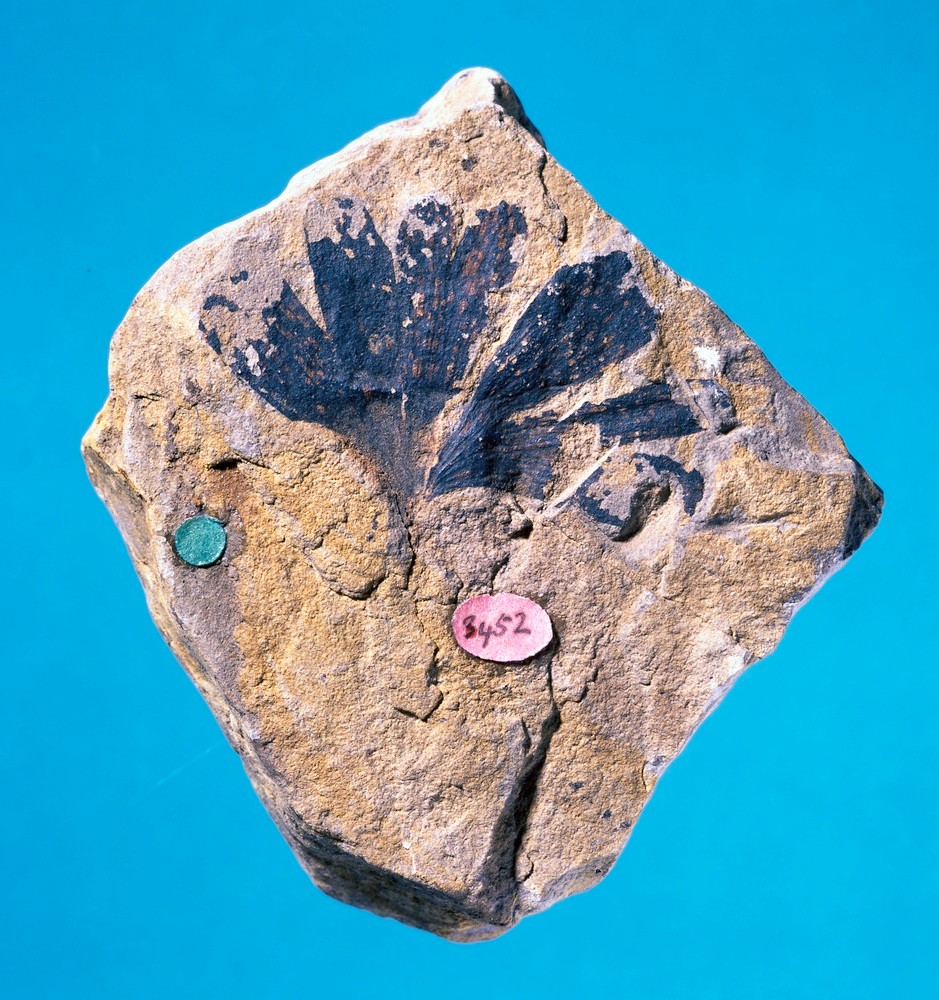| P number: | P549462 |
|---|---|
| Caption: | Ginkgo or Maidenhair tree. |
| Description: | Ginkgos, sometimes called the maidenhair tree, first evolved during Triassic times (190-225 million years ago) and by the Jurassic had a wide distribution throughout Europe, North America and Asia. However, they went into a decline at the end of the Cretaceous and almost became extinct. Only one species remains living today, Ginkgo biloba, which grows in the forests in a few areas of China. During the mid-Jurassic (about 180 million years ago), Gymnosperms (seed-bearing plants) such as conifers, cycads and ginkgos dominated the woodlands and forests of Britain. Ginkgos grew to about 30 m. tall and are easily identified because they have unusual fan-shaped leaves, which are subdivided into lobes. This leaf shape has remained almost unchanged throughout its history. The specimen in the illustration, which grew in Yorkshire during the mid-Jurassic, about 180 million years ago, has an almost identical leaf to present-day Ginkgo biloba. The Plant Kingdom comprises multicellular organisms which grow from an embryo, have cellulose in their cell walls and photosynthesise. This definition separates them from algae (members of Kingdom Protoctista, and from which plants evolved) and fungi (which are placed in the Kingdom Fungae). There are two major groups of plant. A vascular plant has special cells that allow water to pass through it. Non-vascular plants (like mosses, hornworts and liverworts), which are rarely fossilised and known mainly from their spores, lack these special cells. |
| Photographer: | Unknown |
| Copyright statement: | NERC |
| Orientation: | Portrait |
| Size: | 551.37 KB; 939 x 1000 pixels; 80 x 85 mm (print at 300 DPI); 248 x 265 mm (screen at 96 DPI); |
| Average Rating: | Not yet rated |
| Categories: | Best of BGS Images/ Fossils |
Reviews
There is currently no feedback

